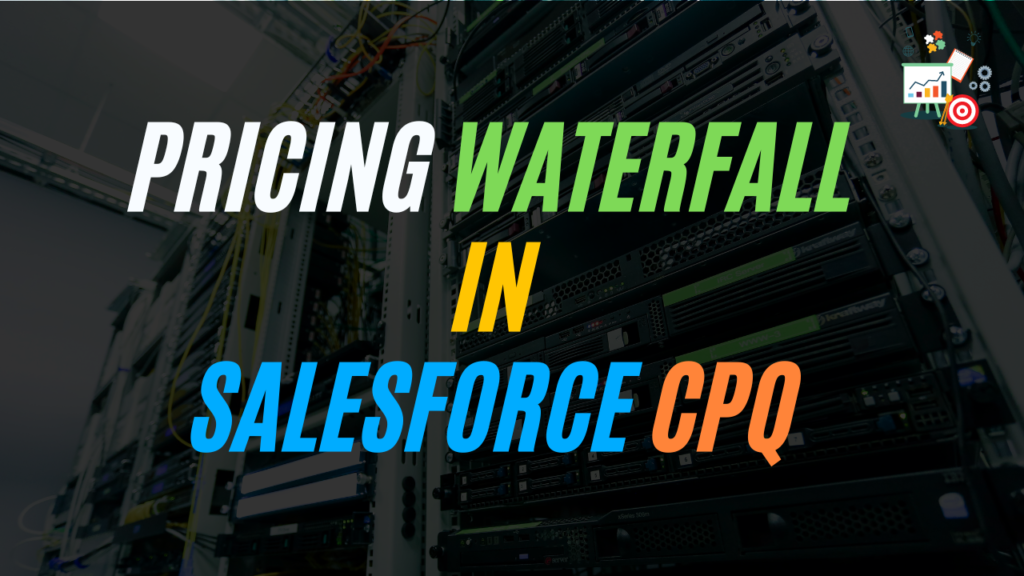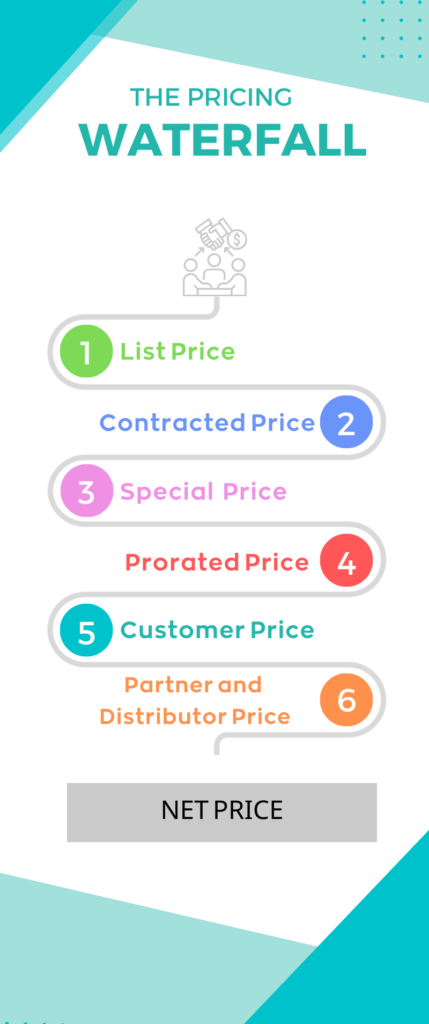Pricing Waterfall in Salesforce CPQ

In this blog let’s discuss the whole pricing methodology in Salesforce CPQ in detail. In Salesforce CPQ, the pricing waterfall calculates the price from the list Price to reach the net price.
Companies have the ability to implement a variety of pricing discounts for their products, providing them with greater freedom in setting prices and offering discounts.
What is Pricing Waterfall in Salesforce CPQ?
Pricing Waterfall is the representation of how price can be calculated from list price till net price. It categorized the pricing components into different stages. We will explore each step in detail. This methodology helps us to identify the pricing process like which type of discount has been applied when respective discount can be applied.
Let’s take a scenario, Rahul, a sales representative of the Stationary Store. He deals with the pricing process and needs to decide and manage what, when and how much discount needs to be applied to each product.
With the help of the Pricing Waterfall process, he can effectively manage each customer’s requirements.
Also Read: Salesforce CPQ Interview Question & Answers
Sequence of Pricing and Calculation

1. List Price: This is the basic type of pricing process inherited from the Standard price book. Essentially, it involves the same price defined in the price book. For example, at a Stationary Store, Marya purchases a notebook priced at ₹600.
2. Contracted Price: This type of pricing is initiated after applying the specific discount. It is also known as Regular Price. The sales Representative agreed to the negotiation and provided a 5% discount. The discount can be differed, it can be a term discount schedule or a slab discount schedule. As per the 5% discount provided, the price for the notebook is ₹570.
3. Special Price: It is discovered from List Price if no contract price has been initiated. In our scenario, the Special price would be ₹570 only as it is inherited from the Contracted Price. In case it hasn’t been initiated from the Contact price it will default to the list price.
4. Prorated Price: Prorated list price is the term used when the list price is for a collection of products or for a time period and is decreased because the product is used for a shorter amount of time.
5. Customer Price: At this level, Customer price is initiated from the discount applied. It deducts the discount amount from the actual price.
Now what type of Discounts can be applied, Let deep dive to explore the discount Schedule:
Discount Schedules
Term-Based Discount Schedule: It works majorly on a Tier basis. Let’s consider an example, Software company provides a license subscription If a subscription is for 3-12 months, a 10% discount will be applied. If a subscription is for 13-24 months, a 20% discount will be applied. The discounts vary based on a yearly/monthly basis.
Volume-Based Discount Schedule: This type of discounting works on the basis of quantity purchase and as per that discounts vary. Stationary Stores offer volume base discounts as:
a. If you purchase 5+ pencils, you receive a 5% discount.
b. If you purchase 10+ pencils, you will be getting a 10% discount
After applying such discounts, these are considered as Customer Price. It makes sure customers receive discounts based on the quantity/ subscription they have opt.
6. Partner and Distributor Price: As in the previous point we explored the Customer price. Similarly, Partner Discount is mainly applicable for Business-to-Business partners. They make sure they receive the discount being a partner. Let’s understand with an example: Michael, a partner of a Stationery store, is required to purchase a few notebooks on which being a partner he receives an additional 5% discount.
Similarly for Distributor Discount, this type of discount is offered to distributors. The pricing is referred as Partner Price or Distributor Price.
7. Net Price: The final calculated price after deducting discounts and adding or subtracting adjustments from the base price.
Benefits of Using Pricing Waterfall in Salesforce CPQ
1. Constant approach to pricing: Organizations may guarantee pricing consistency across various sales channels, geographical areas, and client segments by establishing a systematic pricing cascade. Moreover, by keeping prices consistent, unfairness is preserved and pricing discrepancies which could potentially damage business relationships are effectively avoided.
2. Pricing Transparency: A Pricing waterfall shows you exactly how prices are determined at every point in the quote process. The pricing structure components are easier for sales and customers to understand because of this clarity, which may reduce concerns and misunderstandings.
3. Increased Sales Efficiency: By using a pricing waterfall approach to automate the pricing calculations, sales representatives can streamline their workflows and reduce reliance on manual pricing. Consequently, they are able to concentrate more on closing deals and cultivating relationships, leading to increased efficiency.
4. Dynamic Pricing Adjustments: Depending on various factors including volumes purchased, discounts, and particular customer agreements, a pricing waterfall can be set up to dynamically modify prices. However, the Sales team can react swiftly to customer demands and competitive pressure without requiring manual involvement.
FAQ’s
1. What is a Discretionary Discount in Salesforce CPQ?
Ans. Discretionary discount refers to a discount that a sales representative can apply to a quote manually, without predefined rules or conditions. Unlike Volume-based discounts, in discretionary discounts, a sales representative has the flexibility of negotiating discounts with customers.
2. How can Salesforce CPQ handle Tier pricing within the Pricing Waterfall methodology?
Ans. Salesforce CPQ allows users to define tier pricing structures based on quantity breaks, customer segments or other criteria. This ensures that pricing adjustments within the pricing waterfall are applied consistently across different tiers maintaining pricing integrity
Conclusion
In conclusion, adopting a pricing waterfall in Salesforce CPQ enhances pricing transparency, ensures consistency across sales channels, improves sales efficiency by automating processes, and allows for dynamic pricing adjustments.
This structured approach benefits organizations by fostering trust, streamlining operations, and effectively meeting customer needs.

